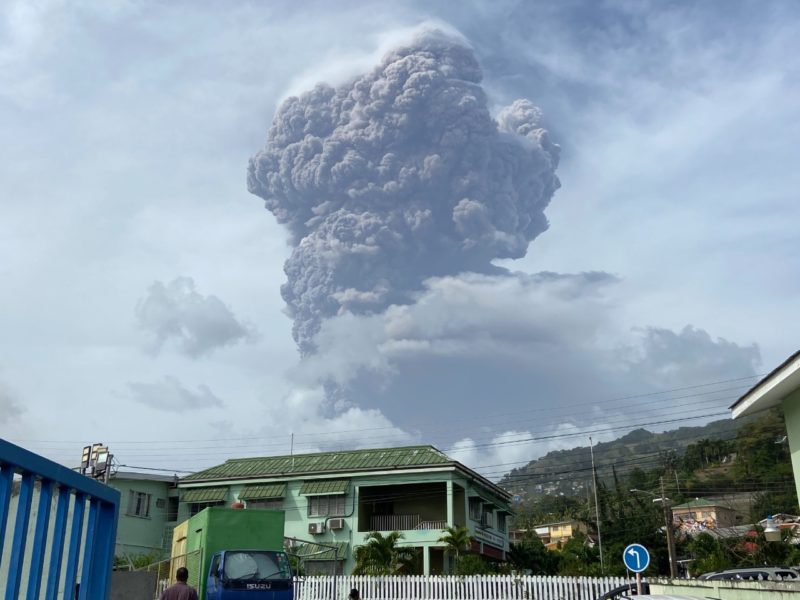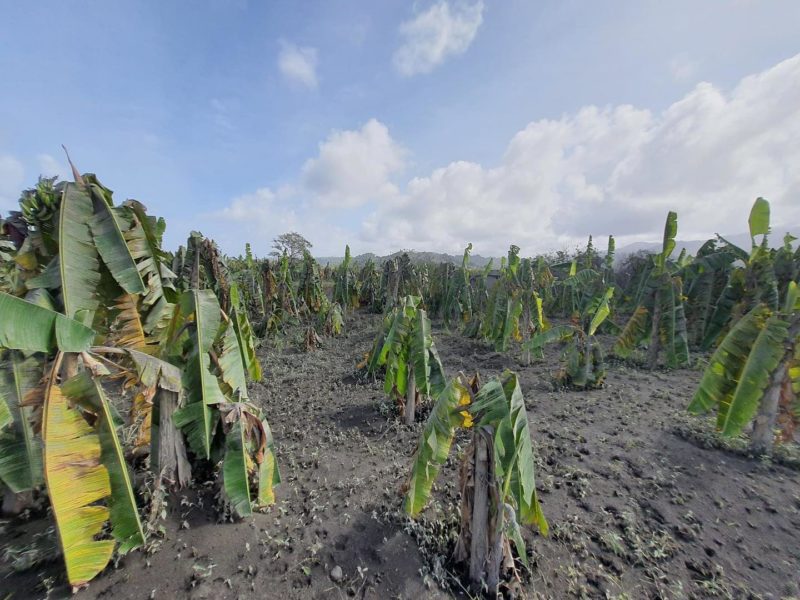At the height of La Soufrière’s explosive events, there was muted elation in Trinidad and Tobago when an unlikely shipment of dasheen from St Vincent and the Grenadines (SVG) reached Port of Spain.
Up to that point, production and export lines seemed to function despite the humanitarian crisis facing the archipelagic island state, following April’s eruption of La Soufrière, and continuing volcanic convulsions. However, experts have explained that the potential for a countrywide food shortage is growing rapidly and could affect the country’s food and nutrition security as well as their trading relationships with countries like Trinidad and Tobago, Barbados, British Virgin Islands (BVI) and Grenada.
Vincentian farmer and Chief Coordinator for the Eastern Caribbean Trading Agriculture and Development Organisation (ECTAD Caribbean), Jethro Greene, explained that due to the damage in the island’s Red Zone – lands closest to the volcano – production has been greatly reduced.
Greene advised that the country would need to scale up production in the Green Zone – lands least affected by the ashfall – in order to offset the shortfall of food available locally as well as for export.
“Most of the vegetables in Red and Orange Zone, over 90 % of the crop, has been destroyed because the ash fall was very heavy, in some places as high as four feet,” he said.
“The roots, tubers, the mature ones would survive, we can still get a crop from them but the young ones, the leaves are damaged … so what you’re going to have is a chronic shortage of food in the next couple months.”
Greene went on to say that there will be a massive reduction in revenue over the next 18 months at least. “Until production comes back, until the volcano goes back to sleep, you are going to have a significant decrease in revenue for persons who are doing trading, a significant decrease for farmers who won’t have products to put onto the market,” he said.
“We may get one or two shipments out before the price climbs up tremendously because of the shortage.”
In terms of major trading partners, the bulk of agricultural trade from St Vincent and the Grenadines is conducted with Barbados and Trinidad and Tobago for products like ginger, sweet potatoes, coconuts, tannia, yam and dasheen. The country had also recently developed a successful livestock trade with Grenada. Lost revenue from these islands will amount to millions of dollars per week.
Steve Maximay, an agricultural consultant who is currently based in Grenada and who has worked extensively within the St Vincent and the Grenadines’ agricultural sector, also outlined the “major setback” to the industry with the damage to medical cannabis grown on the island.



